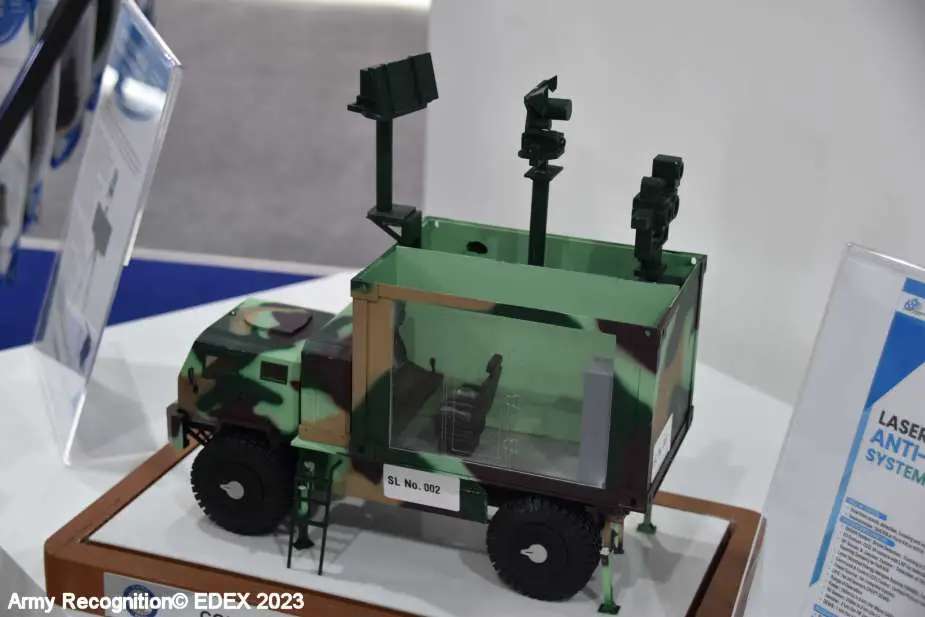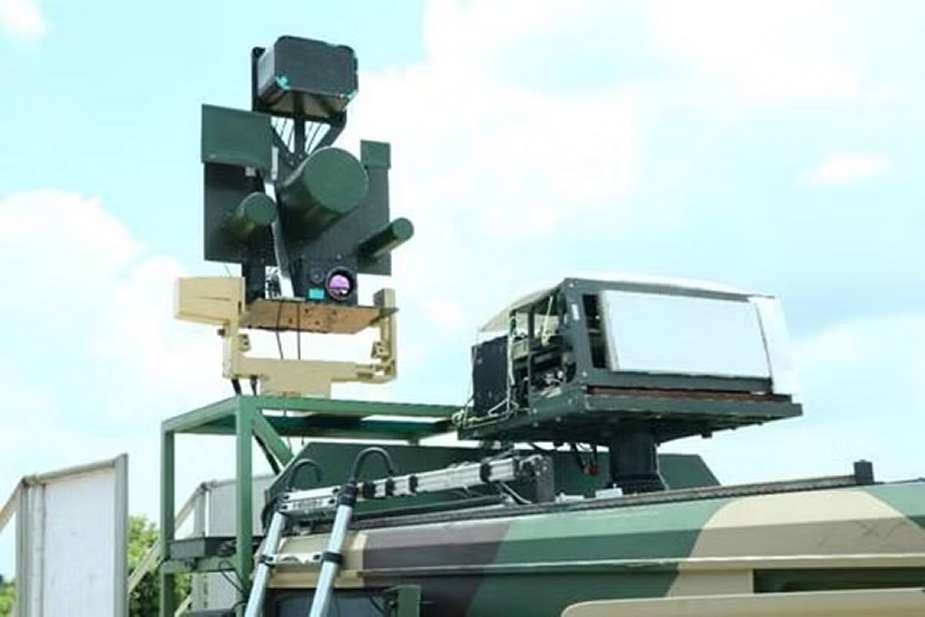Breaking news
Indian defense fields locally developed IDD&IS anti-drone systems along China border.
The Indian Army recently welcomed the first group of seven new domestic Integrated Drone Detection and Interdiction Systems (IDD&IS) for deployment along its northern frontier with China, according to Swarajya Magazine's Kuldeep Negi. These state-of-the-art systems are engineered to defend against unmanned aerial vehicles (UAVs) by employing both jamming (soft kill) and laser (hard kill) strategies.
Follow Army Recognition on Google News at this link

DRDO Anti-Drone System (ADS) displayed at EDEX 2023 (Picture source: Army Recognition)
Crafted by the Defence Research and Development Organisation (DRDO) and Bharat Electronics, this initial induction of the Mark-1 variant systems into the Army Air Defence was reported by the Times of India and The Economic Times. With the capability to detect drones from 5 to 8 kilometers away, jam drones within a 2 to 5-kilometer radius, and destroy them at distances exceeding 800 meters, the IDD&IS boasts impressive operational ranges. Future iterations are expected to extend these interception distances even further. Presently, the systems excel in identifying drones with minimal radar cross-sections and neutralizing them through a combination of soft and hard kill methods.
Recent conflicts, such as those between Armenia-Azerbaijan and Russia-Ukraine, have underscored the critical role of drones on the modern battlefield, leading the Indian military to diversify its UAV arsenal with both homegrown and international models.
To counteract drones effectively, the Indian forces are integrating a variety of counter-drone mechanisms, including jamming, spoofing, and blinding systems to interfere with the drones' satellite or video command-and-control links, in addition to laser-based Directed Energy Weapons (DEWs). Multiple contracts for these technologies have already been finalized, with additional agreements forthcoming.
Despite earlier setbacks in drone and counter-drone technologies, ongoing improvements in laser power and efficiency promise extended range and precision. Innovations in beam-steering and adaptive optics are poised to improve the accuracy and focus of these weapons over longer distances. India's pursuit of advanced anti-drone systems encompasses lasers with power outputs ranging from 2 to 10 kilowatts. Additionally, DRDO's efforts in DEW development aim to reach power levels between 30-50 kilowatts, part of a strategic initiative to enhance the range, precision, and efficiency of these systems.
The Indian Air Force (IAF) is also bolstering its defenses against UAV threats, initiating procurement processes for anti-swarm drone systems, including those based on kamikaze drones and mobile micro munitions. Moreover, the IAF plans to acquire 100-200 vehicle-mounted counter unmanned aircraft systems (C-UAS) to safeguard its assets and airbases against drone incursions.

DRDO's Anti-Drone System (ADS) (Picture source: DRDO)
Defense News March 2024























